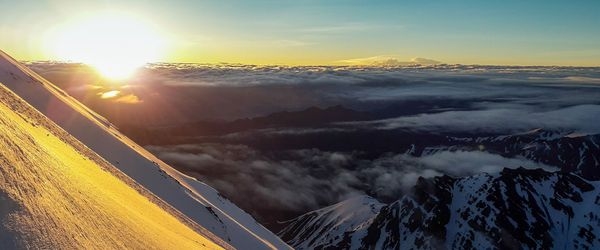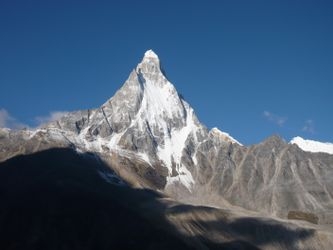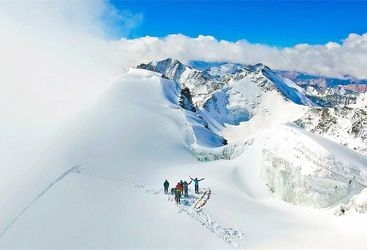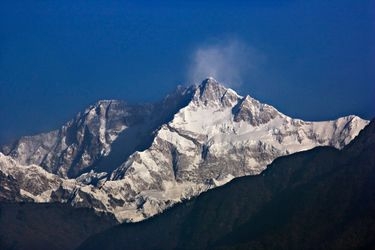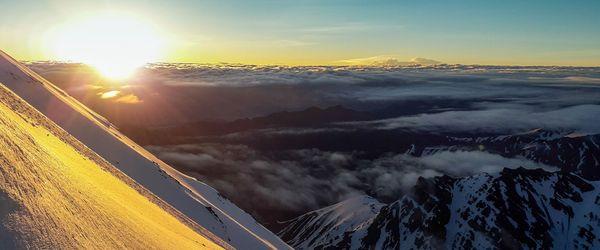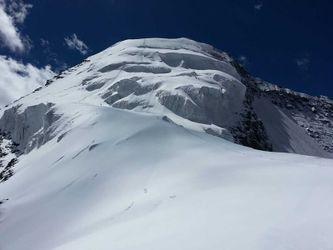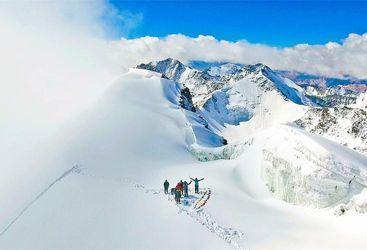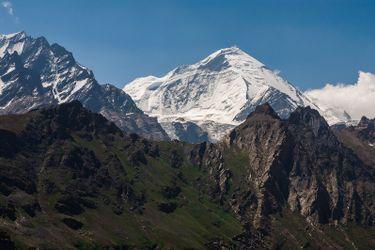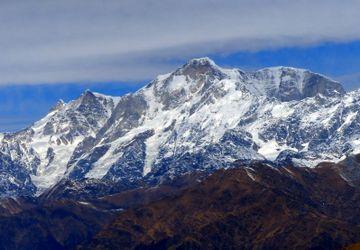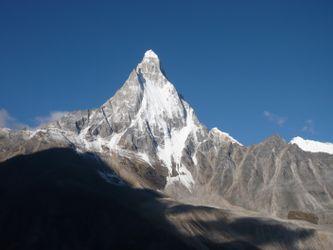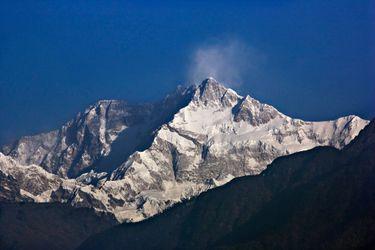Why climb in India
India offers some of the world’s most captivating mountaineering experiences, with a variety of 6000m+ peaks that attract climbers of all skill levels. From the picturesque landscapes of Ladakh to the remote and rugged terrains of the Himalayas, India is home to challenging and culturally rich mountaineering expeditions. The country’s towering peaks, such as Stok Kangri and Kangchenjunga, are perfect for those looking to hone their skills or tackle demanding ascents. Additionally, the cultural diversity and the warm hospitality of the mountain communities make climbing in India a memorable adventure.
When to climb in India
- May to September
The optimal climbing season in India is typically from May to October, depending on the region and altitude. Early in the season, climbers can take advantage of cooler weather, though snow conditions may vary. The summer monsoon season (June to August) often affects access to some peaks in Himachal Pradesh and Garhwal. September and October are generally the most stable months for climbing in Ladakh and Sikkim, providing favorable conditions for summiting the major peaks.
Where to climb in India
India’s mountaineering regions each offer unique experiences for climbers:
- Ladakh (Stok Kangri, Kang Yatze 1 & 2): Known for its arid landscapes and high-altitude peaks, Ladakh is an ideal destination for climbers looking to experience Himalayan ascents in a dramatic setting. The region’s dry climate and rugged terrain provide a challenging yet rewarding mountaineering environment.
- Himachal Pradesh (Mount Kedardome): This region is known for its technical peaks and challenging routes. With its dense forests, glaciers, and alpine scenery, Himachal Pradesh offers climbers a quintessential Himalayan mountaineering experience.
- Garhwal Himalayas (Shivling, Kedardome): Located in Uttarakhand, the Garhwal range features some of India’s most iconic peaks, including the sacred mountain of Shivling. This region is renowned for its technical climbs and spiritual significance, attracting experienced mountaineers from around the world.
- Sikkim (Kangchenjunga): Kangchenjunga, the world’s third-highest mountain, is located on the border between India and Nepal. This majestic peak presents one of the most formidable challenges in the Himalayas, with treacherous conditions and technical routes that demand advanced climbing skills.
Climbs in India
Most popular
The classic climbs in India:
Lesser known
Escape the crowds and get of the beaten path in India with these climbs:
Most difficult
If you want to challenge yourself, consider these climbs in India:
All climbs in India
Note: Sadly Stok Kangri is currently 'closed' to expeditions, to let valley heal a little from pollution.
Stok Kangri, perched at an impressive height of 6,153 meters, is a predominant peak in the Stok Range of the Himalayas in India. It's a popular destination for mountaineers looking for a non-technical yet challenging ascent that offers a taste of high-altitude climbing. The route typically begins from the village of Stok, progressing through diverse terrain, including dry riverbeds, rocky paths, and snowfields. Although some sections require careful navigation, the climb is generally accessible to those with basic mountaineering skills, especially given the terrain's straightforward nature. Expect panoramic views of the Zanskar and Karakoram ranges from the summit, a reward for the effort involved in reaching the top.
The difficulty of Stok Kangri lies primarily in its altitude and the conditions encountered en route to the summit. Acclimatization is crucial, so it's wise to spend several days in Leh or around the Stok base camp to adjust to the thin air. The weather can be unpredictable, with temperatures dropping significantly at night. Snow and ice are common as you approach the summit, making crampons and an ice axe essential gear. The final ascent involves a long summit push, often starting at midnight to take advantage of firmer snow conditions and to ensure a safe return before afternoon clouds roll in.
While the ascent doesn't demand advanced technical skills, the high altitude and potential weather challenges make it a serious undertaking. The best time to climb Stok Kangri is between July and September when the weather is relatively stable, and the mountain is accessible. During these months, you will likely encounter other climbers, as it is a popular peak for both Indian and international mountaineers. With eight guiding companies offering expeditions, you're sure to find a suitable option if you're looking for logistical support.
Kang Yatze 1, a prominent peak in the Ladakh region of India, stands at an impressive height of 6,400 meters. Known for its technical challenge, this peak is often sought after by serious mountaineers looking for a demanding ascent. The climb is characterized by its steep slopes and icy conditions, which require climbers to be well-prepared with the necessary skills and equipment. The peak's isolation adds to the adventure, offering a serene environment away from the more crowded trekking routes.
The ascent of Kang Yatze 1 demands a solid understanding of alpine techniques. The route typically involves navigating through snow and rock, with the upper sections presenting the most significant difficulty. This part of the climb often involves mixed climbing conditions, with the possibility of encountering crevasses and seracs. Weather conditions can be unpredictable, and climbers should be ready to face strong winds and sudden temperature drops. The panoramic views from the summit are breathtaking, providing a rewarding end to the challenging journey.
While Kang Yatze 1 is less frequented compared to other peaks in the region, it offers a genuine sense of isolation and accomplishment for those who reach its summit. With its remote location and demanding conditions, it remains a peak that calls to the experienced mountaineer. If you're considering an expedition here, it's worth noting that there are currently 4 guides offering climbs up Kang Yatze 1, though their services should be carefully evaluated to match your skill level and expectations.
Kang Yatze 2 in the Indian Himalayas, standing at an elevation of 6,250 meters, is a climb that deserves respect from any seasoned mountaineer. Located in the picturesque Markha Valley of Ladakh, this peak offers a blend of technical challenges and striking beauty. Unlike its more technically demanding neighbor, Kang Yatze 1, the second summit is considered less difficult, making it a favored choice for climbers aiming to experience high-altitude mountaineering in India without the extreme technical demands. The ascent generally involves navigating glaciated terrain, which can be tricky and requires a good understanding of crevasse safety. A well-rounded skill set in alpine techniques is essential here, as the mountain's conditions can change rapidly.
Climbing Kang Yatze 2 is often approached from the town of Leh, which serves as a starting point for acclimatization treks through the Markha Valley. The route itself is a journey through varied landscapes, starting with the lush valleys and gradually giving way to the stark beauty of high-altitude desert. As you ascend, you'll encounter moraine fields before reaching the snow-covered slopes that lead to the summit. The final push to the top is typically attempted in the early hours to take advantage of the firmer snowpack, and to avoid the strong winds that tend to pick up later in the day. Reaching the summit rewards climbers with breathtaking views of the surrounding peaks and valleys, a sight that makes the challenges of the climb well worth the effort.
While Kang Yatze 2 might not be the most technically demanding peak, it's not to be underestimated. Weather conditions can be harsh, with sudden snowstorms and high winds posing real threats even to experienced climbers. It's crucial to be well-prepared with appropriate gear and a solid understanding of high-altitude weather patterns. For those considering an expedition, there are currently 12 guides offering their services to help navigate this formidable peak. Remember, every climb is a personal journey, and Kang Yatze 2 offers an excellent opportunity to test your skills in one of India's most beautiful mountain settings.
Kun is one of the towering giants in the Zanskar Range of India, standing at an impressive height of 7,077 meters. It's often overshadowed by its neighbor, Nun, but Kun offers its own unique set of challenges and rewards. The climb is typically approached from the Suru Valley, with the most common route being the East Ridge. This route demands not just physical endurance, but also technical climbing skills, particularly as you navigate the crevassed glacier fields and the mixed rock and ice sections higher up. The weather can be unpredictable, with sudden snowstorms and high winds adding to the overall difficulty of the ascent.
From base camp, which is usually established at around 4,500 meters, the ascent involves a series of camps placed strategically to aid acclimatization. The technical crux of the route is often the steep ice and rock pitches above Camp 2, which require careful navigation and solid ice-climbing techniques. The summit push itself can be grueling, with deep snow and potential avalanche conditions posing constant threats. But the reward is breathtaking: standing atop Kun with expansive views over the rugged Zanskar landscape, a testament to both the mountain's majesty and your perseverance.
Climbing Kun is not a venture to be underestimated. It demands respect for its high altitude and technical challenges, making it a worthy objective for experienced mountaineers. It's crucial to be well-prepared and to have a solid plan for weather windows and acclimatization. Currently, there are 6 guides that offer expeditions to Kun, each bringing their expertise to help navigate the complexities of this formidable peak.
Mount Kedardome is a majestic peak located in the Garhwal Himalayas of India, standing at an impressive height of 6,831 meters. It's a mountain that requires respect and preparation due to its challenging conditions and technical difficulty. The climb involves navigating through glaciers, steep ridges, and potentially unstable snow and ice, which demands a high level of technical skill and experience. It's a popular choice for seasoned mountaineers looking to tackle a peak that offers both a physical and mental test. The approach typically begins from Gangotri, winding through the rugged terrain of the Gangotri National Park before reaching the base camp.
The ascent of Kedardome is not to be underestimated. The route is often covered in deep snow, with crevasses hidden beneath, requiring careful planning and precise execution. The weather can be unpredictable, with sudden changes that might bring strong winds and heavy snowfall. A successful climb necessitates a good understanding of alpine climbing techniques, proficiency in using crampons and ice axes, and the ability to set up safe and efficient camps at high altitudes. The summit push is long and arduous, but for those who reach the top, it offers breathtaking views of the surrounding peaks, including the iconic Kedarnath and Bhagirathi group of mountains.
While Mount Kedardome presents a formidable challenge, it rewards climbers with a sense of accomplishment that few other peaks can match. The climb is an opportunity to push personal limits in one of the most beautiful and remote regions of the Himalayas. If you're considering this peak, be prepared for a serious expedition that will test your endurance and skills. There are currently 3 guides offering expeditions up this mountain, providing support for those who seek to tackle its heights.
Shivling, a striking peak in the Indian Himalayas, stands proudly at an elevation of 6,543 meters. Known as the "Matterhorn of India," this mountain offers a challenging climb with its near-perfect cone shape and technical routes. The approach to Shivling is through the Gangotri Glacier, and from there, climbers are met with a variety of routes, each demanding a high level of skill. The mountain's west ridge is the most popular, featuring exposed rock sections and ice climbing that tests even the most seasoned mountaineers. The unpredictable weather conditions add an extra layer of difficulty, making meticulous preparation crucial.
Climbers often speak of Shivling's north face, which provides a more technical and less traveled path. It requires proficiency in mixed climbing, with steep pitches and a mix of rock and ice that can be particularly daunting. The ascent offers a rewarding challenge, with the added thrill of navigating through seracs and crevasses. Avalanches and rockfall are potential hazards, demanding constant vigilance and adaptive strategies. The summit push is usually attempted in pre-dawn hours to capitalize on the more stable conditions, offering a breathtaking sunrise view over the Garhwal Himalayas for those who successfully reach the top.
For those interested in tackling Shivling, the climbing season typically runs from May to October, with the post-monsoon period offering slightly more stable conditions. It's a mountain that requires not just technical proficiency but also a deep respect for its formidable nature. Only two guides currently offer expedition services to Shivling, underscoring its status as a climb for those truly committed to pushing their limits.
Kangchenjunga, straddling the border between Nepal and India, stands as the world’s third-highest mountain, reaching a formidable height of 8,586 meters. Renowned for its remoteness and challenging conditions, it presents a formidable adventure for experienced mountaineers. Unlike more frequently climbed peaks such as Everest, Kangchenjunga offers a more solitary and pristine experience. The approach itself is long and arduous, requiring a deep commitment even before the technical climbing begins. The mountain is notorious for its unpredictable weather, with frequent heavy snowfall and sudden storms adding to the challenge.
The climb itself is a test of both skill and endurance. The standard route, the southwest face, is a mixed climb involving rock, ice, and snow, demanding proficiency in all three. High altitudes and extreme weather conditions serve as constant companions, with the final push to the summit often made under the cover of darkness to take advantage of the more stable early morning weather. Avalanches and crevasses pose significant risks, demanding constant vigilance and meticulous planning. The thin air at such altitudes means that acclimatization is crucial, and climbers must be well-prepared for the physical and mental demands of the ascent.
Kangchenjunga is not to be underestimated, with a reputation for being one of the most challenging 8,000-meter peaks. Its remote location and the logistical complexities involved add layers of difficulty beyond the technical demands of the climb itself. This mountain requires a high level of self-sufficiency and respect for its unpredictable nature. While the number of expeditions remains limited, there are currently 7 guides offering organized climbs, ensuring that those who choose to undertake this formidable journey have the necessary support and expertise available.
Climb difficulties in India
How many of each difficulty grade can you find a route for.
| French Alpine | Difficulty description | Quantity |
|---|---|---|
| F | Easy. Suitable for beginners, minimal technical skills required. | 0 |
| PD | Not very difficult. Some technical skills required, with moderate exposure. | 3 |
| AD | Fairly difficult. Requires good technical skills and experience, with significant exposure. | 1 |
| D | Difficult. Requires advanced technical skills and experience, with high exposure. | 3 |
| TD | Very difficult. Requires very advanced technical skills, experience, and serious commitment. | 0 |
| ED | Extremely difficult. Requires exceptional technical skills, experience, and high commitment. | 1 |
Guides with trips in India
There are 41 guided trips listed for India. Trips range from $380 to $34,000, and average $7,465 per expedition.

